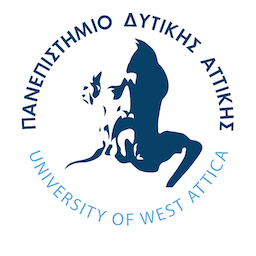Δημοσιεύσεις

2012 |
Zervou, A.; Sinanoglou, V. J.; Papadas, G.; Thomaidis, N.; Meimaroglou, D.; Miniadis-Meimaroglou, S. Effects of pan-frying on PUFA, MUFA and individual lipid content in Spicarasmaris Journal Article In: ActaAlimentaria, vol. 41, iss. 1, pp. 33-44, 2012, ((I F:0.475),1 ετεροαναφορά). Abstract | Links | BibTeX | Ετικέτες: cholesterol, minerals, MUFA, PUFA @article{Zervou2012,The effects of different frying methods (oil free, extra virgin olive oil and sunflower oil pan-fried) on proximate, neutral and polar lipid composition as well as the fatty acid content of Spicara smaris, a fish species commonly consumed by Mediterranean people, were determined. Pan-frying caused insignificant changes in proteins and polar lipids, whereas a significant (P<0.05) decrease in moisture and ash content, and a significant (P<0.05) increase in the neutral lipids and total sterol content could be detected after pan frying in extra virgin olive oil (EVOO) and sunflower oil. The loss of the individual phospholipid content was not significant during the pan-frying process, but its proportion was influenced by the uptake of the culinary fat. The absorption of oil medium in pan-fried, in EVOO, and in sunflower oil samples resulted in an alteration of their fatty acid profiles including a significant (P<0.05) increase of C18:1ω-9 and C18:2ω-6 ratios and a decrease of EPA, DHA percentages as well as of the ω-3/ω-6 ratio. All frying methods affected (P<0.05) lipid quality indices but their values could be considered satisfactory in terms of healthiness. Among the fried samples, the oil free fried samples also presented the poorest triglyceride and cholesterol content, and the greatest ω-3/ω-6 ratio, thus, they were found to present the most appropriate frying method for healthy eating. |
2010 |
Tsape, K.; Sinanoglou, V. J; Miniadis-Meimaroglou, S. Comparative analysis of the fatty acid and sterol profiles of widely consumed Mediterranean crustacean species Journal Article In: Food Chemistry, vol. 122, iss. 1, pp. 292-299, 2010, ((I F:3.458), 21ετεροαναφορές). Abstract | Links | BibTeX | Ετικέτες: cholesterol, Crustaceans, Neutral lipids, PUFA, Triacylglycerols, ω-3/ω-6 @article{Tsape2010,Comparative analysis of FA, NL and sterol profiles in the Nephrops norvegicus (langoustine), Palinurus vulgaris (lobster) and Penaeus kerathurus (shrimp) muscle and cephalothorax showed that C16:0, C16:1ω-7, C18:0, C18:1ω-9, C20:4ω-6, EPA and DHA were found to be their major FA. Highest EPA occurred in langoustine muscle TL, DHA in both shrimp tissues TL while C20:4ω-6 in lobster muscle and cephalothorax TL. Muscle and cephalothorax NL consisted mainly of sterols (42.5–54.4% and 13.7–43.1%) and triacylglycerols (35.4–45.8% and 44.6–59.4%). Cholesterol was the major sterol (70.90–98.58% and 97.10–98.31% of total sterols in muscle and cephalothorax respectively) followed by avenasterol (0.18–20.32% and 0.07–0.70%) and β-sitosterol (0.29–7.30% and 0.23–0.75%). Lower concentrations of brassicasterol, stigmasterol, Δ7-stigmasterol, campesterol and campestanol were also found. The examined crustaceans muscle (edible part) was found to be a good ω-3 PUFA source for the consumers, while the cephalothorax (which is usually discarded) could be used effectively as a source for ω-3 PUFA production. |
Loukas, V.; Dimizas, C.; Sinanoglou, V. J; Miniadis-Meimaroglou, S. EPA, DHA, cholesterol and phospholipid content in Pagrus pagrus (cultured and wild), Trachinus draco and Trigla lyra from Mediterranean Sea Journal Article In: Chemistry and Physics of Lipids, vol. 163, iss. 3, pp. 292-299, 2010, ((I F: 2.861), 9ετεροαναφορές). Abstract | Links | BibTeX | Ετικέτες: cholesterol, DHA, EPA, Pagrus pagrus, Trachinus draco, Trigla lyra @article{Loukas2010,EPA, DHA, cholesterol and phospholipid content were determined in the Trachinus draco, Trigla lyra and (wild and cultured) Pagrus pagrus muscles. The EPA and DHA levels - as determined by GC-GC/MS - in the cultured P. pagrus muscles (233.20 +/- 16.3 and 399.39 +/- 31.1 mg/100g of the wet tissue respectively) were found to be significantly higher compared to the ones in the wild P. pagrus, T. draco and T. lyra (26.31 +/- 2.26, 158.24 +/- 10.92 mg/100 g, 28.65 +/- 1.68, 155.97 +/- 2.63 mg/100 g 35.66 +/- 0.66 and 102.52 +/- 1.71 mg/100 g of the wet muscles respectively). The amounts of cholesterol (determined by GC on a capillary column) and phospholipids in the cultured P. pagrus muscles were significantly higher (149.3 mg/100 g and 0.80 g/100 g of the wet tissue respectively) compared to the ones in the wild P. pagrus (8.73 mg/100 g and 0.40 g/100 g), T. draco (41.72 mg/100 g and 0.59 g/100 g) and T. lyra muscles (38.63 mg/100 g and 0.40 g/100 g of the wet tissue respectively). The highest DHA/EPA and omega-3/omega-6 ratios were 6.00 and 5.93 in wild P. pagrus and T. draco muscles respectively, while the lowest in cultured P. pagrus (1.71 and 1.48 respectively). |

